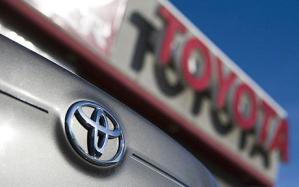 Toyota just can’t catch a break. One year after Toyota accepted “full responsibility” for a slew of widely-reported instances of its vehicles suddenly accelerating out of control, the Japanese motor giant issued a recall of 2.17 million additional vehicles in the US today.
Toyota just can’t catch a break. One year after Toyota accepted “full responsibility” for a slew of widely-reported instances of its vehicles suddenly accelerating out of control, the Japanese motor giant issued a recall of 2.17 million additional vehicles in the US today.
The recall, which includes vehicles from both the Lexus and Toyota brands, is due to problems with drivers-side floor mats jamming against the accelerator pedal, causing it to stick in a depressed position. This brings the total number of Toyota-made cars recalled since January 2009 to nearly 15 million.
The recall comes only slightly more than a week after the US government reported that it had found no evidence that Toyota’s electronic throttle systems were to blame for the “unintended acceleration” issues that plagued the car maker last year.
According to an official statement from Toyota, the decision to recall was “voluntary,” though the National Highway Traffic Safety Administration says it urged the company to issue the recall.
The models included in the most recent accelerator pedal/floor mat recall include approximately:
• 20,000 Lexus GS 300 and GS 350s from 2006 and 2007
• 372,000 Lexus RX models made between 2004 and early 2007
• 397,000 Toyota Highlander and Highlander HV models from 2004 to 2006
• 603,000 Toyota 4Runner models made in 2009
• 17,000 Lexus LX models made between 2009 and 2011
• 761,000 Toyota Rav4 models made from 2006 to 2010
So what exactly is the problem with the floor mats? Toyota explains via its website:
In the event that the floor carpet around the accelerator pedal is not properly replaced in the correct position after a service operation, there is a possibility that the plastic pad embedded into the floor carpet may interfere with the operation of the accelerator pedal. If this occurs, the accelerator pedal may become temporarily stuck in a partially depressed position rather than returning to the idle position.
Owners of Lexus GS 300 and GS 350 All-Wheel Drive vehicles will receive notification of the recall by March 1. Those who own a Lexus RX or a Toyota Highlander will be notified as to how they can inspect for the problem, and will receive a second notification once replacement parts are available. Owners of 4Runner, LX 570, and Rav4 vehicles will also receive notification to inform them of the issue.


